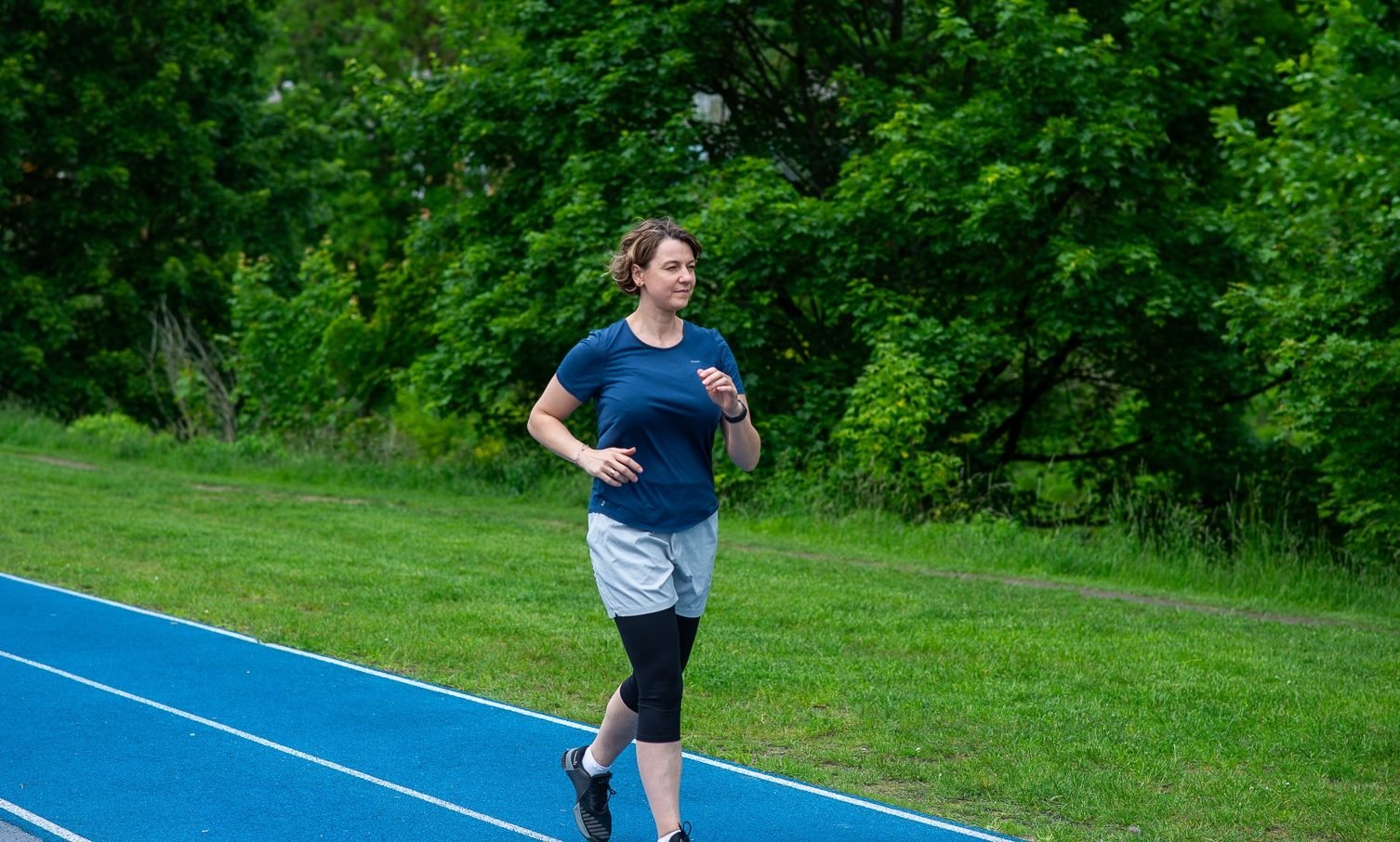The Exercise-Hormone Connection: Is There One?
Reading time 8 min

Reading time 8 min

The exercise and hormone connection plays a powerful role in how your body navigates menopause. Exercise can help improve your hormone levels and manage menopause symptoms. Strength training and combining different types of exercise work particularly well for boosting hormones like estradiol and growth hormone, lowering blood pressure, and improving your body composition.
What is the exercise and hormone connection?
Exercise influences key hormones like estrogen, cortisol, insulin, and growth hormone. Strength and aerobic training can help balance these hormones, reduce menopausal symptoms, improve metabolism, and support overall well-being. Regular movement becomes a hormonal reset button—especially important during menopause, when natural regulation declines.
Estrogen levels dramatically drop during the menopause transition (after a rollercoaster perimenopausal hormone change). Exercise cannot reverse ovarian shutdown, but it can help your body adapt to lower estrogen.
Regular aerobic exercise tends to modestly lower circulating estrogen levels in postmenopausal women, particularly when combined with weight loss. This reduction often comes from decreased body fat: less fat means less estrogen production outside the ovaries. While this might sound concerning, it’s generally considered beneficial for health, potentially reducing risks like breast cancer1.
Strength training appears to affect estrogen differently. Research shows that resistance exercise can slightly increase estradiol levels in postmenopausal women. In one study, just three sessions per week of weight training boosted estrogen more than six sessions of cardio2. While it might be confusing what is beneficial: less or more estrogen during postmenopause, it seems that the balance is key.
By postmenopause, your ovaries produce virtually no progesterone, a calming and regulating ally, and exercise cannot make them ovulate again. Current research indicates that moderate or high-intensity exercise does not significantly affect progesterone levels during menopause transition. Instead, exercise provides other important health benefits during this stage. Check our other articles on the benefits of exercise3.
LH rises during the menopause transition and remains elevated in postmenopause. Research shows that regular resistance training and yoga can lead to a significant reduction in LH levels during menopause transition. This change may help with some menopausal symptoms such as hot flashes and improve quality of life4, 5.
Exercise during menopause transition can influence cortisol, the primary stress hormone, but the effects depend on the type, intensity, and duration of exercise.
A single session of strenuous exercise (like cycling) can cause a temporary spike in cortisol levels. Such a cortisol spike is a normal stress response which is not harmful compared to chronically high cortisol. Over the long term (longer than 3 months), regular exercise training may help regulate or reduce baseline cortisol levels. Doctors caution that very intense training without adequate recovery might enhance cortisol-related stress, while 1-2 times a week HIIT and resistance training exercise may be beneficial for cortisol management6, 7, 8.
Menopause transition makes it easier to gain weight and harder to regulate blood sugar, partly because declining estrogen and progesterone promote insulin resistance. Many women see their insulin levels creep up, contributing to fat storage, especially around the belly.
Exercise is one of the most powerful tools to improve insulin sensitivity during menopause transition. When you work your muscles, they become more efficient at using glucose for fuel, which means you need less insulin to use up glucose. Many studies show that just 3-4 months of consistent exercise significantly reduces insulin, along with reducing body fat and waist size9. Most importantly, any exercise will do the trick and lower your insulin!10
Changes in body composition—especially losing body fat—play a major role in how exercise affects cortisol, insulin, and other hormones during menopause transition. In particular, reducing belly fat seems to be a big reason why these hormones shift in a healthier direction.
Exercise remains one of the most powerful tools we have during menopause, but it requires a more nuanced approach than simply “more is better.” The key is finding the right combination that supports rather than stresses your changing system, and that combination might look different than what worked in your 30s—and that’s perfectly okay.
Dr. Jūra Lašas
1.
McTiernan, A. et al. Effect of exercise on serum estrogens in postmenopausal women: a 12-month randomized clinical trial. (2004) https://doi.org/10.1158/0008-5472.can-03-3393
2.
Park, S. et al. Twelve weeks of resistance band exercise training improves age-associated hormonal decline, blood pressure, and body composition in postmenopausal women with stage 1 hypertension: a randomized clinical trial. (2020) https://doi.org/10.1097/GME.0000000000001444
3.
Noor, R. et al. Effects of exercise on sex steroid hormones (estrogen, progesterone, testosterone) in eumenorrheic females: A systematic to review and meta-analysis. (2024) https://doi.org/10.1186/s12905-024-03203-y
4.
Nilsson, S. et al. Resistance training reduced luteinising hormone levels in postmenopausal women in a substudy of a randomised controlled clinical trial: A clue to how resistance training reduced vasomotor symptoms. (2022) https://doi.org/10.1371/journal.pone.0267613
5.
Ribeiro, A. et al. Hatha Yoga practice decreases menopause symptoms and improves quality of life: A randomized controlled trial. (2016) https://doi.org/10.1016/j.ctim.2016.03.014
6.
Ryan, A. et al. The Effects of Weight Loss and Aerobic Exercise on Cortisol and Cortisol Suppression in Postmenopausal Women with Overweight and Obesity. (2024) https://doi.org/10.1080/07435800.2024.2439408
7.
Dote-Montero, M. et al. Acute effect of HIIT on testosterone and cortisol levels in healthy individuals: A systematic review and meta-analysis. (2021) https://doi.org/10.1111/sms.13999
8.
Di Blasio, A. et al. Walking training and cortisol to DHEA-S ratio in postmenopause: An intervention study. (2018) https://doi.org/10.1080/03630242.2017.1310168
9.
Bueno-Notivol, J. et al. Effect of programmed exercise on insulin sensitivity in postmenopausal women: a systematic review and meta-analysis of randomized controlled trials. (2017) https://doi.org/10.1097/GME.0000000000000936
10.
Hulteen, R. et al. Detrimental Changes in Health during Menopause: The Role of Physical Activity. (2023) https://doi.org/10.1055/a-2003-9406